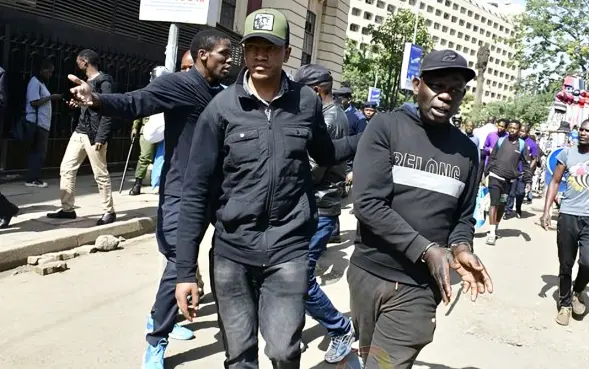Recognizing an undercover police officer or unmarked police vehicle might seem daunting at first, but with the right observations and attention to detail, it’s easier than you might think. Here’s a comprehensive guide to identifying undercover law enforcement.
Spotting Undercover Police Officers
Undercover officers blend into the crowd by disguising their appearance and behavior. However, certain tell-tale signs can give them away:
1. Look for Distinct Hairstyles
- Male officers often have neat, well-groomed haircuts like shaved heads, side parts, or military-style “high-and-tight” cuts.
- Female officers may prefer practical styles such as ponytails, low buns, or cropped hair to stay inconspicuous.
Note: Some deep-cover assignments may allow officers to grow out their hair and beards to further blend in.
2. Observe Clothing Choices
- Baggy Jackets: Officers often wear oversized or bulky outerwear to conceal tools like handcuffs, tasers, or firearms.
- Casual Activewear: Hoodies, windbreakers, or warm-up jackets are common disguises. Be wary if these look unusually clean or out of place in the setting.
- Cargo Pants or Shorts: The multiple pockets provide practical storage for police gear.
Pro Tip: Look for mismatched or awkward combinations in their outfits, such as tactical boots with casual clothing.
3. Notice Footwear
- Durable, military-style boots or hiking sneakers in neutral tones (black, brown, or gray) are commonly worn by officers for comfort and functionality.
4. Spot Equipment Outlines
- Watch for the distinct outline of a firearm or other equipment beneath their clothing, particularly when they lean, bend, or raise their arms.
5. Behavioral Clues
- Unusual Friendliness: Officers may try to gain your trust by striking up a conversation or asking seemingly innocent but probing questions.
- Out of Place Presence: If someone doesn’t fit in with the crowd, such as a clean-cut individual at a grungy punk concert, take note.
- Working in Pairs: Two mismatched individuals who stay close but don’t interact much may be undercover partners.
Identifying Unmarked Police Cars
Unmarked vehicles are trickier to spot, but certain features can give them away:
1. License Plates
- Many unmarked cars have municipal or government plates with fewer characters or specific designations like “MU.”
2. Excessive Antennas
- Police vehicles often require multiple antennas for communication, sometimes 4-5, compared to the 1-2 found on civilian cars. Look for puck-style antennas designed to blend with the vehicle’s paint.
3. Emergency Lights
- Hidden flashers may be installed in the grill, side mirrors, or rear windshield. Civilian cars typically don’t have these features.
4. Push Bumpers
- These heavy-duty bars on the front of the vehicle are used for forcing other vehicles off the road. They’re uncommon on civilian cars except for larger models like Jeeps or trucks.
5. Dark Window Tinting
- While many cars have tinted windows, police vehicles often feature significantly darker tints, especially in the front.
Practical Tips for Staying Alert
- Trust your instincts. If someone or something feels off, there’s likely a reason.
- Avoid drawing attention to yourself or the individual you suspect might be undercover.
- Remember, officers are trained to blend in, so none of these signs are definitive on their own.
By paying close attention to these physical and behavioral cues, you can better spot undercover police officers and unmarked vehicles in your surroundings. Always exercise caution and respect the law while making these observations.
